Mainland Europe’s first total solar eclipse since 1999 is just 850 days away. Where will you be? As excitement dies down from the “Great American Eclipse,” eclipse chasers are turning their attention to Wednesday, August 12, 2026, when a 183-190-mile-wide moon shadow moves across remote Siberia, Greenland, Iceland and Spain.
The Total Solar Eclipse Month Is Here — Along With a Spectacular Meteor Shower, a Planet Sighting, and More in April's Night Sky
01.04.2024 - 12:19 / travelandleisure.com / April
It’s the month we’ve all been waiting for. In just a few days, the total solar eclipse will delight skywatchers along a 100-mile-wide strip of North America, known as the path of totality. This April 8 marvel is expected to draw tens of millions of viewers — especially since the contiguous U.S. won’t see another total solar eclipse until 2044.
Yet the eclipse isn’t the only sight to watch for in the skies this April. In addition to the moon-meets-sun spectacle, we have meteor showers, planet sightings, and more on the horizon. Here are the top astronomical highlights to bookmark this month.
Kick off the month with the year’s top interstellar event: the total solar eclipse, which will travel more than 9,000 miles from Mexico, across 13 states from Texas to Maine, then out over the ocean through eastern Canada, according to Astronomy.com. A total solar eclipse occurs when the moon glides between Earth and the sun, turning day into a false dusk as it fully covers the latter. Skywatchers will experience the event’s signature dimming effects as the partial eclipse begins; the partial eclipse lasts for several hours, but fleeting totality only hits for a few minutes. Eclipse-viewing parties across the country will offer festive perches to watch the event (eclipse glasses required). If you can’t watch in person, don’t miss NASA’s livestream.
The eclipse is just the start of this week’s sky-gazing fun. On the evening of April 10, head outside to see the two-day-old moon and bright Jupiter near each other along the western horizon just after sunset. The pair will be visible to the naked eye, and close enough to fit into a pair of binoculars,according to In-the-Sky.org.
According to Starwalk, bright Jupiter and green-tinged Uranus will near each other in the night sky on April 20. Look for the planets in the evening, near the western horizon, once the sun sets. While you can see Jupiter with the naked eye, you’ll need stargazing binoculars — and a destination with low light pollution — to fully admire Uranus and its vertical rings.
The medium-strength Lyrid meteor shower runs from April 16-25, and is expected to hit its peak of activity the night of April 22, according to Space.com. Viewing conditions aren’t ideal, as the bright moon will wash out many shooting stars. That said, it's always worth heading out if you find yourself in a dark-sky location with clear skies. Catch the shower near the constellations Lyra and Hercules.
This month’s full moon name doesn’t mean stargazers will actually see a pink moon — we’ll need to wait until the next supermoon in September for that. Instead, the full pink moon is an ode to the springtime blooms in North America, according to the Old Farmer’s Almanac. You can catch it

A Photo Dispatch of the Total Solar Eclipse From Buffalo, New York
For the April 8 total solar eclipse, photographer Levi Mandel traveled to Buffalo, New York, to observe the celestial event—and the many others who journeyed for it. Below, he shares the experience through text and photos.

Want to see the next total solar eclipse in 2026? An expert recommends booking travel now.
It'll be two decades before the next total solar eclipse hits the US.
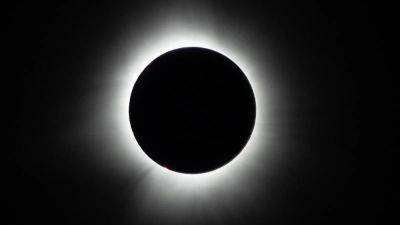
In Photos: Total Solar Eclipse Dazzles Skywatchers Across North America
Did you see the total solar eclipse? Despite clouds in some regions, some sky-watchers in Mexico, the U.S. and Canada were able to get clear views of a totally eclipsed sun for as long as 4 minutes 28 seconds in what was the longest totality viewed from land since 2010—and the longest in the U.S. since 1806.

Total Solar Eclipse Photos: NASA Astronauts Take Historic Images From Space
You’ve seen the best photos of the total solar eclipse from the path of totality on April 8—now see them from space.
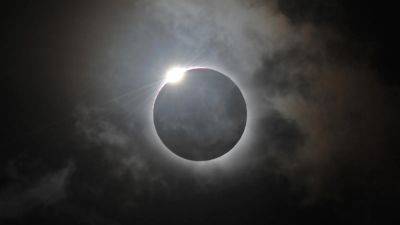
Why Clouds Could Disappear As The Total Solar Eclipse Begins
Accurate weather forecasts for Monday’s path of totality weren’t available until a few days ago, but scientists have confirmed that cumulus clouds over land begin to disappear almost instantly when a partial solar eclipse begins.
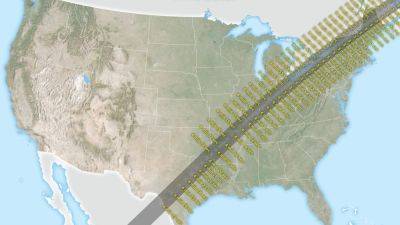
Where And When To See The Total Solar Eclipse In Every U.S. State
A total solar eclipse is coming to the U.S.—but not everyone is invited. On Monday, April 8, the moon will be close enough to Earth to appear just larger than the sun as it crosses its disk, casting a shadow that will move across the planet at about 1,500 mph.

Total Solar Eclipse: Why Hermit Crabs And A UFO Will Be The First To See It
It’s being hailed as the “Great North American Eclipse.” The longest since 1806, in fact, the best since 2017 and the last until 2033 in Alaska, and 2044 in Montana and the Dakotas.
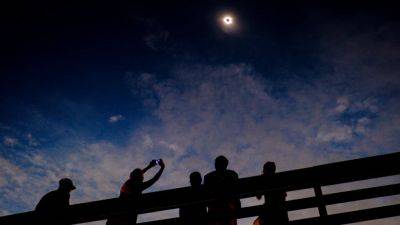
Solar Eclipse 2024: Expect Flight Delays and Traffic Jams from Texas to Maine
Millions of people are expected to travel to see the total solar eclipse on April 8. As a result, large swaths of the country could be faced with traffic jams and flight delays in the coming days, government agencies warn.
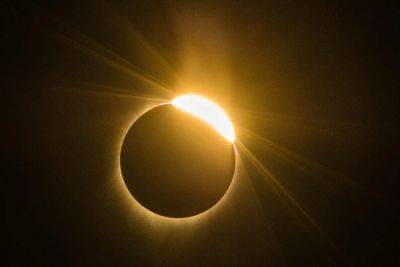
There’s Still Time For A Trip To See The Total Solar Eclipse In Ohio
On Monday, April 8, 2024, a total solar eclipse will be visible within parts of North America. If weather is permitting and there aren’t cloudy skies, total visibility will start along Mexico’s Pacific Coast. In the United States, the path of totality, which is the narrow ribbon of places where the full eclipse can be viewed, goes from Texas to Maine. NASA is offering a map that shows the path of totality as well as a timetable of when the eclipse should appear in some of the major locations where it can be viewed.

Solar Eclipse Travel: Last-Minute Tips And Places To Stay
Eclipse fever is running high as the U.S. gears up for a total solar eclipse that will pass across a huge swath of the country on April 8. Looking for last-minute eclipse travel tips? Demand is off the charts for flights, hotels and rental cars along the path of totality. But it’s not too late to book travel for the solar eclipse—if you know where to look.
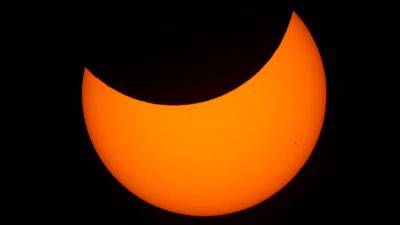
26 Places To Watch Monday’s Partial Solar Eclipse Across The U.S.
This Saturday, April 8, a solar eclipse will be seen across North America. From inside a 115-mile-wide path stretching across Mexico, the U.S., and Canada, a total solar eclipse will see the sun’s corona glimpsed with the naked eye for a few minutes as a “supermoon” covers all of the sun.
